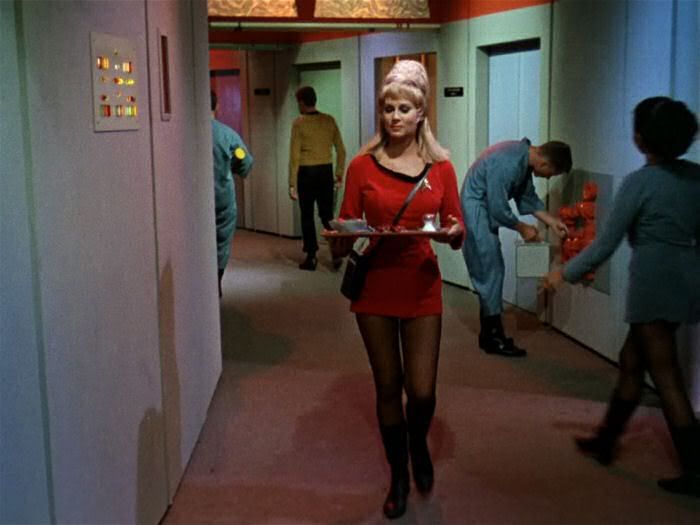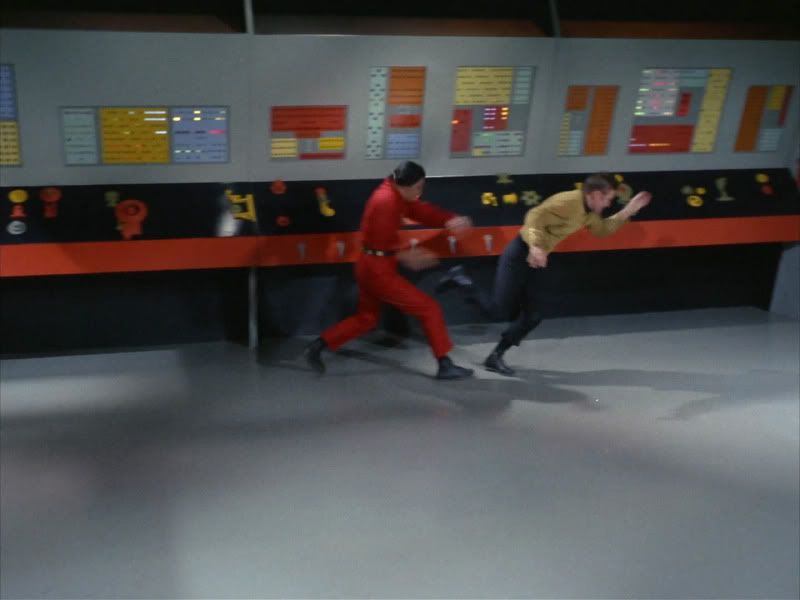While I agree that the curves corridors were meant to indicate locations in the primary hull, I would hesitate to say the ship was designed to show space was at a premium.I don't care what Jeffries said in later years, the shipboard conventions depicted in Star Trek were intended to be something the WWII-veteran tv-viewing public could understand and relate to. Space on board ship was at a premium (let alone on s SPACE SHIP). They woulidn't dick around with odd-shaped corridors for the hell of it.
The corridors were pretty wide and tall. Not unlike a hotel or apartment building. No ducking your head or turning sideways to pass.

Then there is the dance floor/engineering room.









